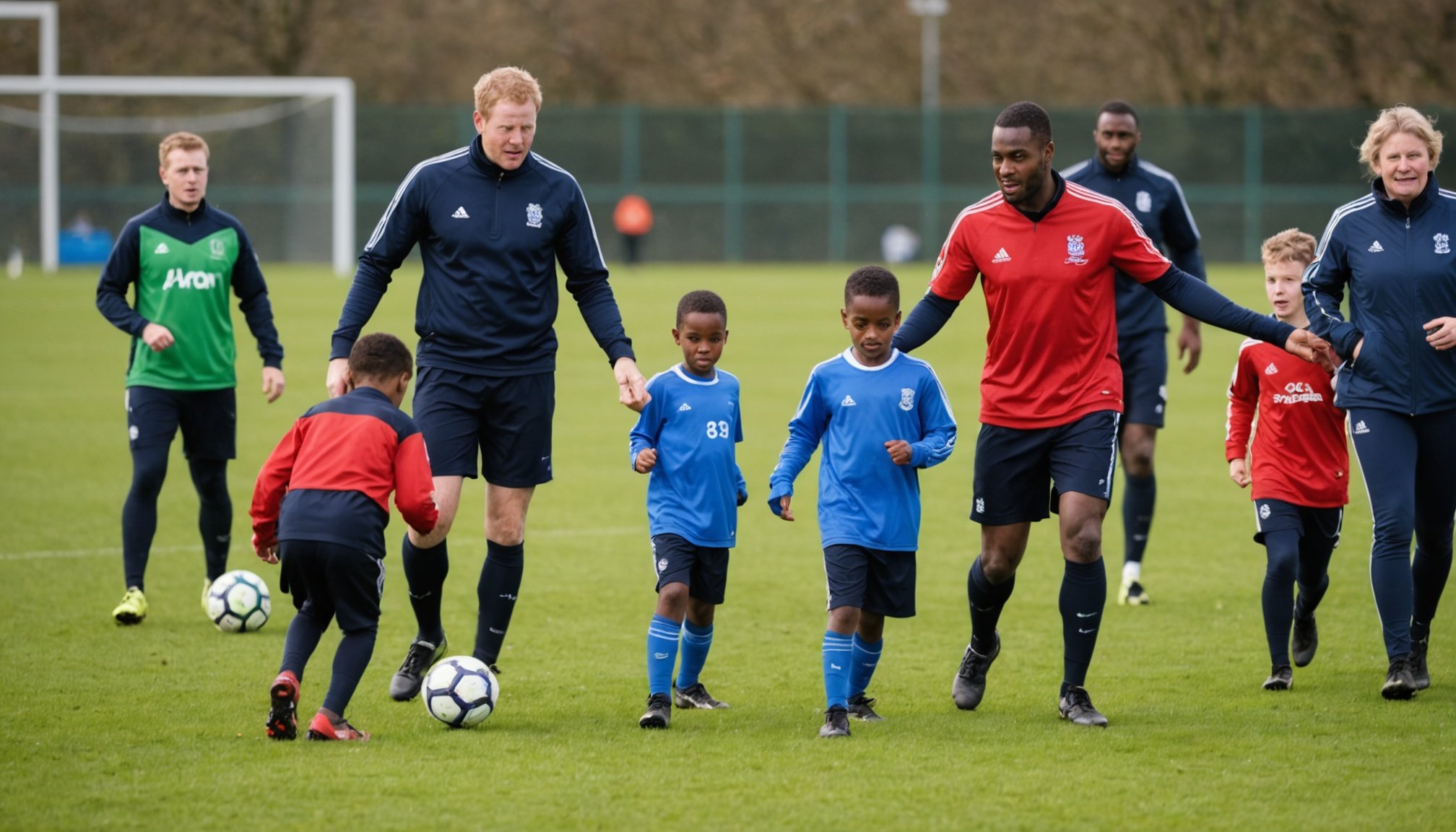Understanding the Needs of Underserved Communities
Addressing the unique needs of underserved communities is crucial for effective community engagement. A vital first step is assessing community needs and identifying barriers to social inclusion. This involves evaluating economic, cultural, and infrastructural challenges that may prevent participation.
Outreach strategies play a significant role in breaking down these barriers. Examining successful community outreach programs provides valuable insights. For instance, a program in a diverse urban area managed to boost participation by introducing sports events tailored to various cultural preferences, bridging gaps with residents through culturally sensitive approaches.
Additional reading : Enhancing Volleyball Defense: UK Teams Unlock Winning Strategies with Game Tape Analysis
Best practices for conducting needs assessments include engaging directly with community members through surveys and focus groups. Listening to their experiences and suggestions helps build trust and ensures that initiatives are both relevant and sustainable. Additionally, collaborating with local leaders who understand the terrain enhances the validity of the data collected.
Underserved areas often face unique challenges, but developing outreach strategies that prioritize inclusivity and flexibility can create transformative opportunities. By thoroughly understanding and addressing community-specific needs, organisations can cultivate environments where everyone feels included and valued, leading to lasting social inclusion.
Also read : Enhancing Athletic Edge: How Yoga and Mindfulness Boost Performance for UK Athletes
Innovative Programs and Initiatives
Exploring innovative sports programs becomes pivotal in reshaping community landscapes. These programs are often designed to break down barriers, using sports as a tool for social change and community bonding. By integrating diverse activities into their program development, these initiatives can reach various groups.
Funded Initiatives
Funded initiatives play a crucial role in supporting underserved communities. For example, grants for installing community sports facilities create safe environments for engagement. The allocation of resources towards equipment and training enhances participation. Such funding amplifies the reach and capacity of community sports programs, fostering inclusive participation.
Grassroots Programs
Grassroots programs have proven effective in stimulating community involvement. These programs rely on the initiative of local volunteers, using minimal resources to maximise impact. They often focus on local traditions and needs, ensuring relevance. Sports clubs can catalyse change by fostering a sense of ownership and pride within communities.
Collaboration with Local Organizations
Collaborating with local organizations amplifies the success of sports clubs. These organizations offer insights into community dynamics and help to tailor the programs accordingly. Partnering with local leaders ensures sports initiatives are integrated into existing cultural frameworks. This synergy between sports clubs and local bodies is paramount in creating sustainable and meaningful engagement pathways.
Partnerships and Collaborations
Strategic Partnerships are instrumental in expanding the reach and effectiveness of community programs. By fostering collaboration benefits with schools, businesses, and nonprofits, these partnerships enable resource sharing and enhance community partnerships. Schools provide the youth connection, businesses contribute resources, and nonprofits offer invaluable insights into underserved communities.
Effective examples illustrate how these partnerships bolster community initiatives. Schools, for instance, can offer facilities for sports clubs, while businesses sponsor equipment or uniforms, and nonprofits deliver specialised training. This multifaceted support transforms ambitions into tangible achievements, promoting inclusive community environments.
The importance of building partnerships lies in their capacity to pool collective strengths, which optimises resource allocation and expands outreach potential. This cooperative synergy ensures that programs are sustainable, accessible, and tailored to community needs, ultimately driving heightened engagement.
Successful case studies reinforce the power of collaboration. One notable example is a city-wide initiative that united various stakeholders to organise monthly multi-sport festivals in underutilised public spaces. This initiative not only provided an engaging platform for diverse groups but also harnessed local resources, demonstrating increased participation and greater social cohesion through teamwork. By embracing strategic alliances, communities can nurture inclusive growth and promote lasting positive change.
Inclusivity and Accessibility Strategies
Creating inclusive environments within sports clubs is essential for encouraging diverse participation. This involves understanding and implementing strategies that promote accessibility and inclusivity for all members. Clubs can achieve this by fostering a welcoming atmosphere where everyone feels comfortable and valued. Incorporating diversity initiatives such as multicultural events can also enhance social cohesion.
Adaptations for Various Needs
Making adaptations for individuals with disabilities is a crucial aspect of inclusive sports programming. Sports clubs can invest in specialised equipment, provide tailored instructions, and facilitate adaptive sports activities to cater to various needs. By doing so, they not only fulfil legal obligations but also express a commitment to equality and participation for all.
Engaging Diverse Populations
To effectively engage diverse populations, clubs can implement inclusive programming that reflects the community’s cultural and ethnic diversity. Collaborating with community leaders to develop programs that resonate with local traditions ensures inclusivity. Language support services and culturally relevant marketing can further break down participation barriers, allowing broader access and engagement.
By prioritising inclusivity and accessibility in sports, communities can enjoy richer cultural exchanges and expanded opportunities for social interaction. Such efforts contribute to holistic community health and foster bonds across diverse groups. Through inclusive practices, sports clubs promote a sense of belonging and mutual respect among all participants.
Measuring Impact and Success
Evaluating the impact of community engagement initiatives is essential for understanding their effectiveness and sustainability. Program evaluation helps ensure that goals are met and provides insights into areas that require enhancement. When assessing the community impact, utilise specific success metrics to measure achievements and guide future efforts.
Methods for Evaluating Success
To determine the effectiveness of programs, consider both qualitative and quantitative data. Statistical evidence, such as attendance rates and demographic engagement statistics, offers a clear picture of participation levels. Meanwhile, testimonials and feedback from participants provide personal insights into the program’s impact. Such anecdotal evidence can reveal the emotional and social bonds formed through sports programs.
Collecting Testimonials and Feedback
Gathering participant feedback is vital for continuous improvement. Use surveys and focus groups to collect valuable insights directly from the community. This feedback not only highlights successes but also illuminates areas needing adjustment. Direct engagement with participants can drive meaningful changes that align with the community’s evolving needs.
Incorporating these evaluation techniques can significantly enhance a program’s effectiveness, ensuring it remains relevant and impactful. Tracking progress with measurable outcomes allows organisations to refine strategies and ultimately deliver a more profound positive impact on the communities they serve.
Overcoming Challenges in Engagement
Addressing barriers to participation is crucial for increasing engagement in sports among underserved communities. Common obstacles include financial constraints, limited access to facilities, and a lack of culturally relevant programs. Understanding these factors can help sports clubs develop more holistic and inclusive approaches.
Identifying Common Barriers
Several challenges hinder participation in sports. These include high costs of equipment, transportation issues, and insufficient awareness of available programs. Moreover, cultural differences and language barriers can make certain communities feel alienated or excluded from mainstream activities.
Strategies for Overcoming Engagement Challenges
To effectively tackle these issues, sports clubs can:
- Implement sliding scale fees for programs to make them more affordable.
- Partner with local organisations to provide transportation solutions.
- Develop culturally tailored programs that resonate with diverse groups.
- Increase marketing efforts in multiple languages to reach non-native speakers.
Outreach strategies targeting these areas foster a more welcoming environment for all potential participants.
Building Resilient Communities
Community resilience can be strengthened through sports by promoting teamwork, discipline, and self-efficacy. Clubs should focus on creating supportive networks and encouraging local leadership participation. Empowering individuals within these communities to take active roles not only enhances engagement but also fosters long-lasting social bonds and personal growth.




